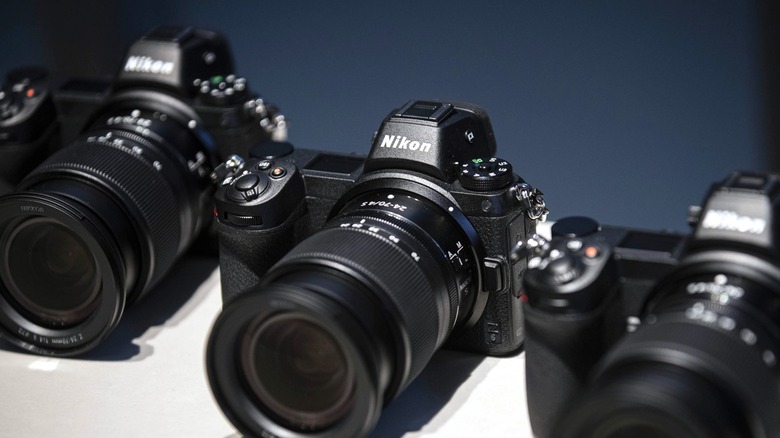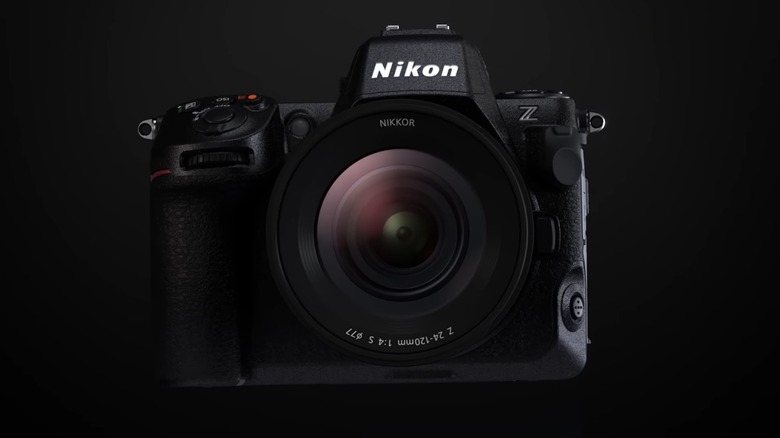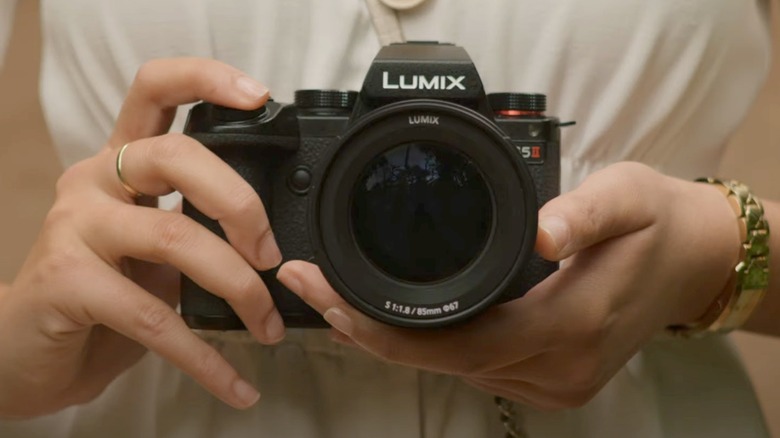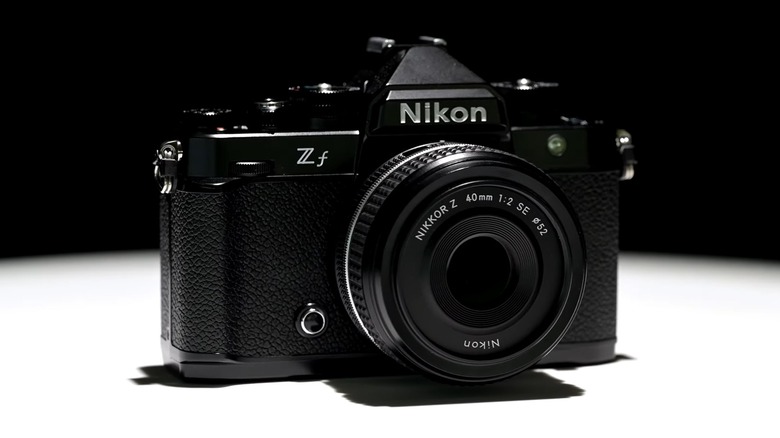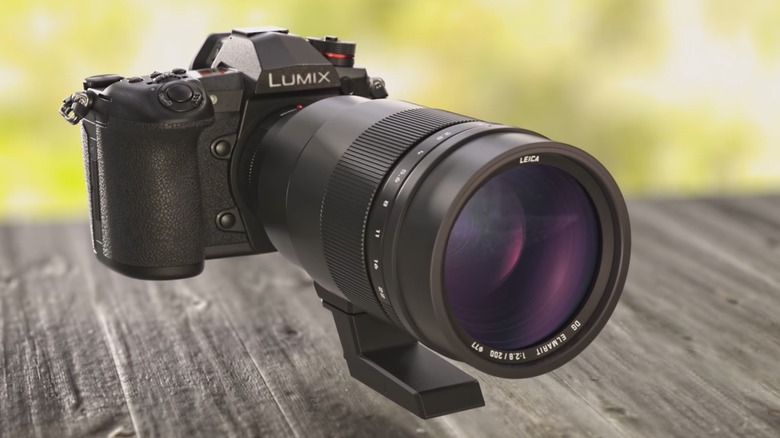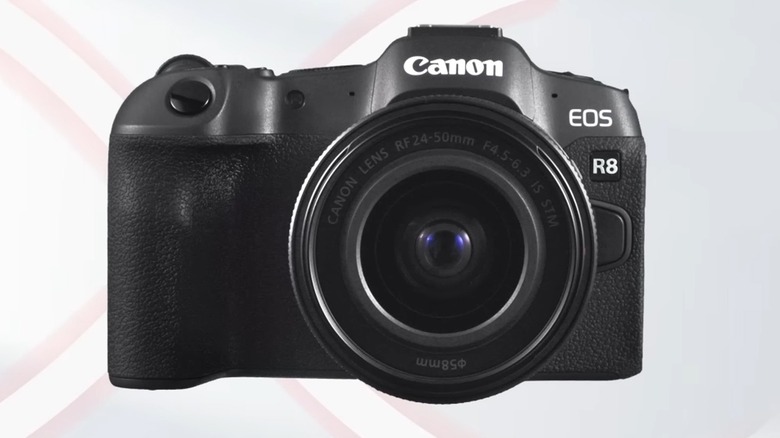5 Of The Best Mirrorless Cameras In 2024
In the past, you needed an SLR (Single Lens Reflex) camera to level up your photography game. Those days seem to be coming to an end. Canon last announced a new SLR in 2020 and discontinued most EF and EF-S lenses in 2022. Nikon also has been rumored to drop out of the SLR race since 2022. Although Nikon denied this, all its F-mount cameras and lenses have been out of production since before January 2024.
That's because mirrorless camera technology has advanced to the level that it could replace SLRs. It now has comparable battery life and similar or superior quality to SLRs while being lighter than its comparable SLR model. Furthermore, companies are releasing new lenses designed specifically for their mirrorless camera lines.
So, if you want to upgrade from your smartphone, consider skipping SLR cameras and going straight to mirrorless. And with the many new models available today, you might have difficulty deciding which camera is for you. These are some we've selected based on performance and the availability of lenses and other accessories.
Nikon Z8
This camera is the mirrorless equivalent of the Nikon D850 – the second-most expensive camera in Nikon's SLR lineup. The Nikon Z8 brings the image quality of the top-end Nikon Z9 but in a lighter package and at a more affordable price, albeit still expensive.
Nevertheless, the Z8 brings excellent imaging quality and features that professional videographers need to perfect their craft. And given that it's the equivalent of the D850, it has a robust body with weather sealing. It also has a blisteringly fast 120 fps continuous drive, ensuring you do not miss a moment while photographing the action.
Another advantage you get with a Z-series Nikon camera is the massive lens support in the market. Nikon currently has 42 Z-mount lenses available on its website, from the $280 Nikkor Z DX 24mm f/1.7 to the $15,500 Nikkor Z 600mm f4 super telephoto lens. But if those are too pricey for you, you can choose lenses from other manufacturers, like Sigma, Tamron, Viltrox, or Samyang.
Lumix S5 II
Although Panasonic is not as popular as Canon, Nikon, or Sony in the camera space, it makes high-quality cameras that can compete with the best. The Panasonic S5M2 is its latest full-frame model, launched in January 2023.
The S5 Mk II is Panasonic's top-of-the-line model, designed to compete against the Sony a7 IV while undercutting its price by about $500. And despite having a lower megapixel count — 24 mp vs. 33 mp for the Sony – it can compete with the best of them in terms of image quality. However, it does have some drawbacks if you're into video, with the camera missing some pro video features.
Nevertheless, the camera is also environmentally sealed, so you don't need to worry about the camera if you get caught in the rain with a matching professional lens. Also, you still get a good selection of lenses if you're going with Panasonic. The Lumix S5 II uses the Leica L mount, so you could use lenses from Panasonic, Leica, and other manufacturers like Sigma and Viltrox.
Nikon Zf
One of the things that modern cameras lack is the numerous dials that gave soul to older film cameras. But Nikon knew some photographers craved this, so it produced the Nikon Zf full-frame camera. This $2,000 mirrorless is similarly priced to the Nikon Z6 II and performs almost the same.
However, the Nikon Zf skips the Cfexpress Type-B storage in favor of a UHS-I microSD slot, thus belying its focus on consumers and enthusiasts over professionals. Even so, the Zf is still environmentally sealed, protecting it against dust and drips. It also uses a magnesium alloy body, helping it withstand the wear and tear of everyday use.
And since this camera uses the Z mount, it's compatible with all the lenses available to the Nikon Z8, giving you a massive lens selection. Furthermore, you can purchase the Zf with a kit lens — either the Nikkor Z 40mm f/2 (SE) lens or the Nikkor Z 24-70mm f/4 S lens – allowing you to start shooting immediately when you unbox the camera.
Lumix G9 II
The Lumix G9M2 isn't a full-frame mirrorless camera. Instead, it uses the Micro Four-Thirds (MFT) system that Olympus and Panasonic developed in 2008 for mirrorless cameras. But despite sporting a sensor smaller than the full-frame cameras we've listed so far, the Lumix G9M2 is still an excellent camera.
It has all the features you get from top-end cameras, like a 25-megapixel sensor with eight stops of sensor-shift image stabilization. It also has a 14 fps continuous drive and can freeze action with its 1/32000-second maximum shutter speed. All these features are protected by a magnesium-alloy body with environmental sealing for protection against bumps, scratches, and moisture.
But the most significant advantage that the Lumix G9M2 has is its MFT mount. Because it's a widely used system, you can use OM Systems (formerly Olympus), Panasonic, Sigma, Tamron, Viltrox, Samyang, and more. And because MFT is much smaller than full-frame and APS-C sensors, the G9M2 is one of the lightest, most compact cameras you can get that will still deliver exquisite image quality.
Canon EOS R8
Of course, we cannot list the best cameras without adding Canon, one of the biggest camera manufacturers in the market. If you want a great photography experience without breaking the bank, consider the Canon EOS R8. This is the most affordable recent mirrorless camera you can get from Canon, as the more affordable Canon EOS RP, although still available on the Canon website, was launched five years ago in 2019.
Despite being a budget model, the R8 offers excellent performance, providing superb image quality even in low-light conditions. It can also shoot 4K@60 using the entire sensor, meaning you avoid the cropping you get when shooting 4K videos on other cameras.
However, the biggest drawback with the EOS R8 is its use of the Canon RF lens mount. While several third-party lenses are available for this mount, they're mostly manual focus-only lenses designed for cinematography or specialty applications. If you want the usual standard lenses, you must invest in more expensive first-party lenses from Canon.
If you want to level up your photography gear this year, consider these mirrorless models to find your next camera. They're all great options; you won't go wrong with any of them in your camera bag.
